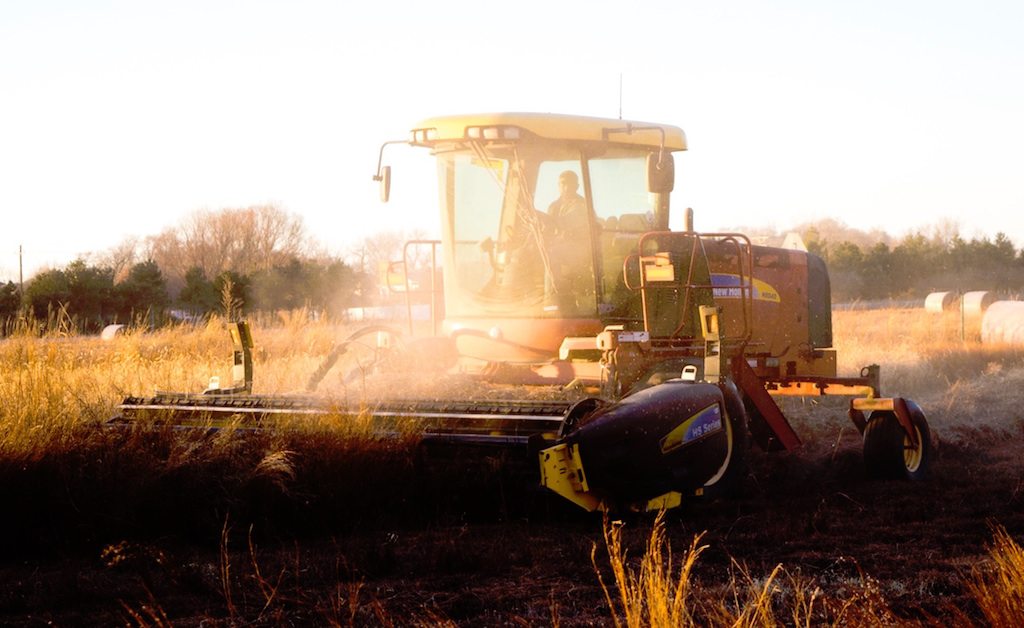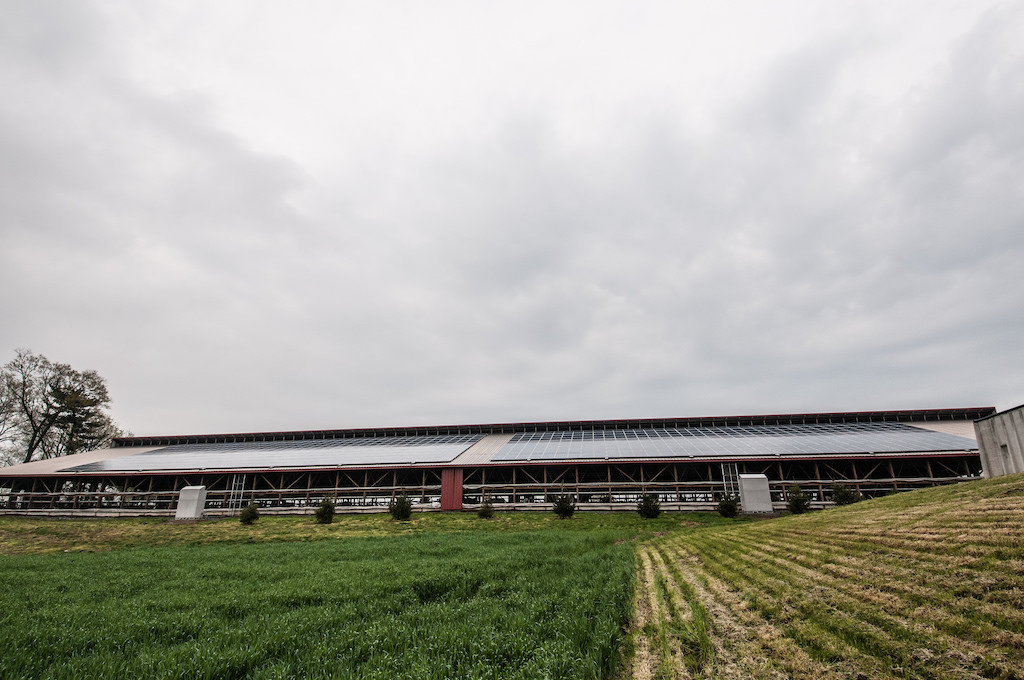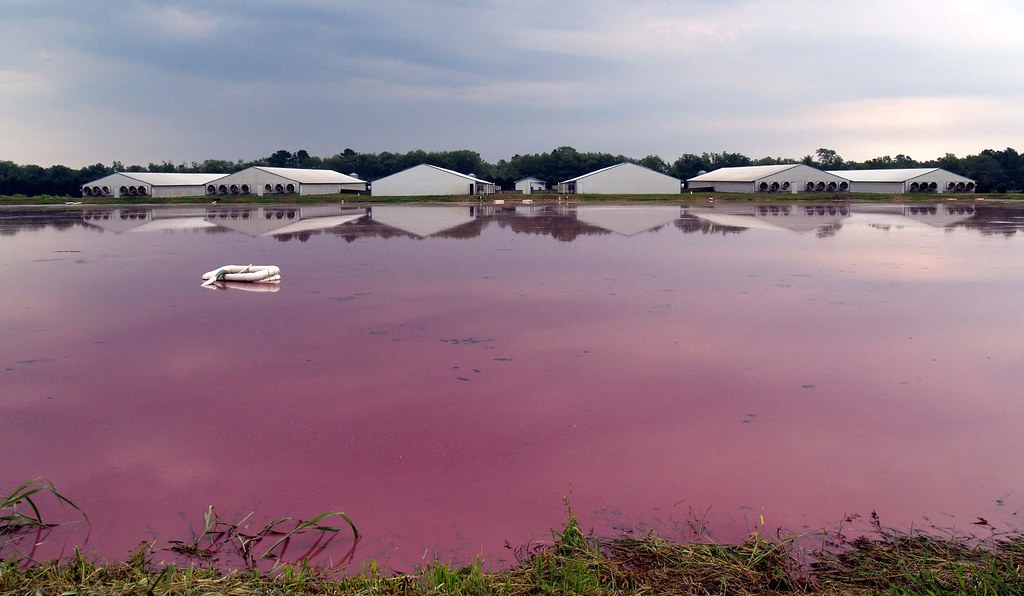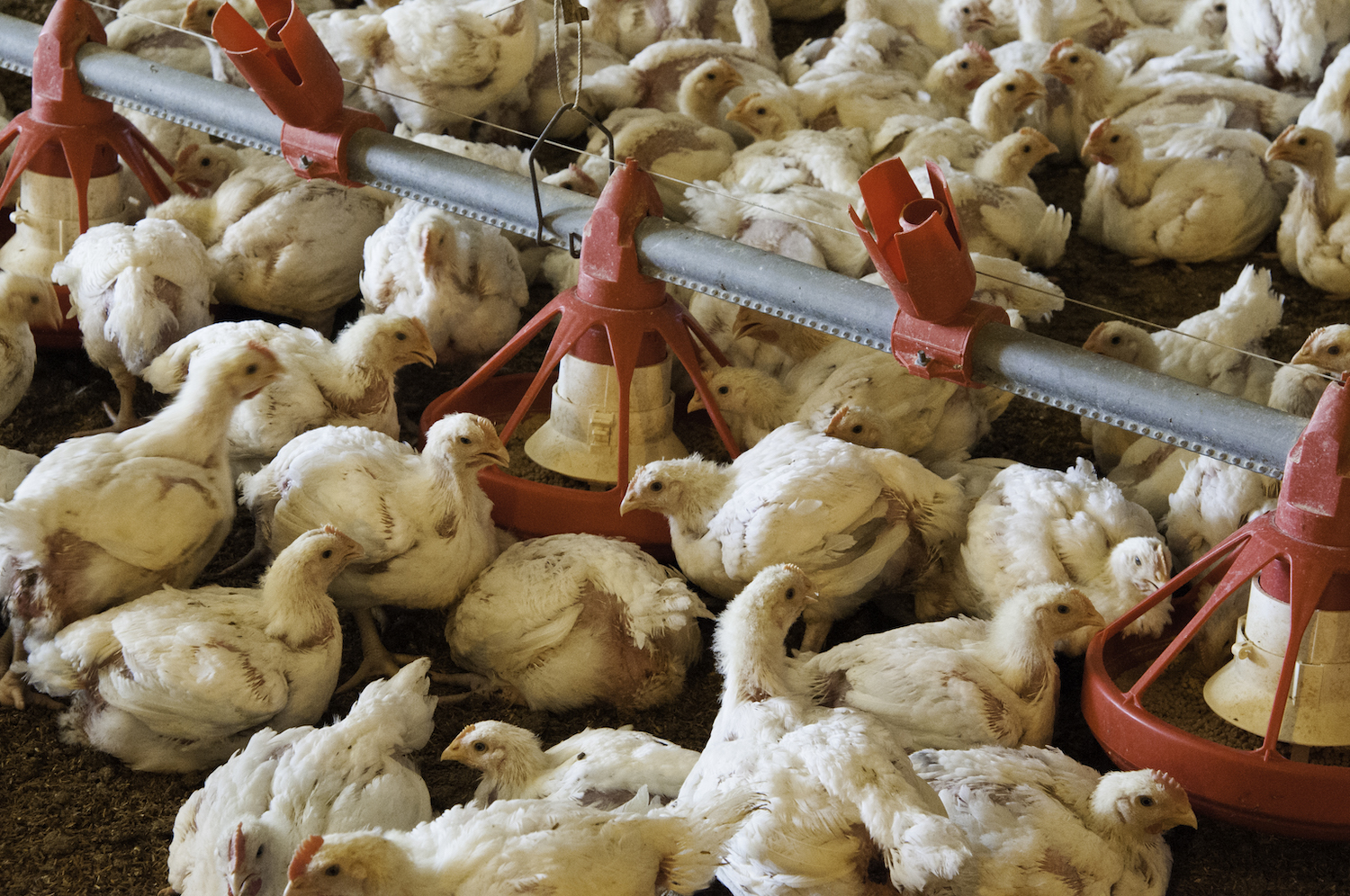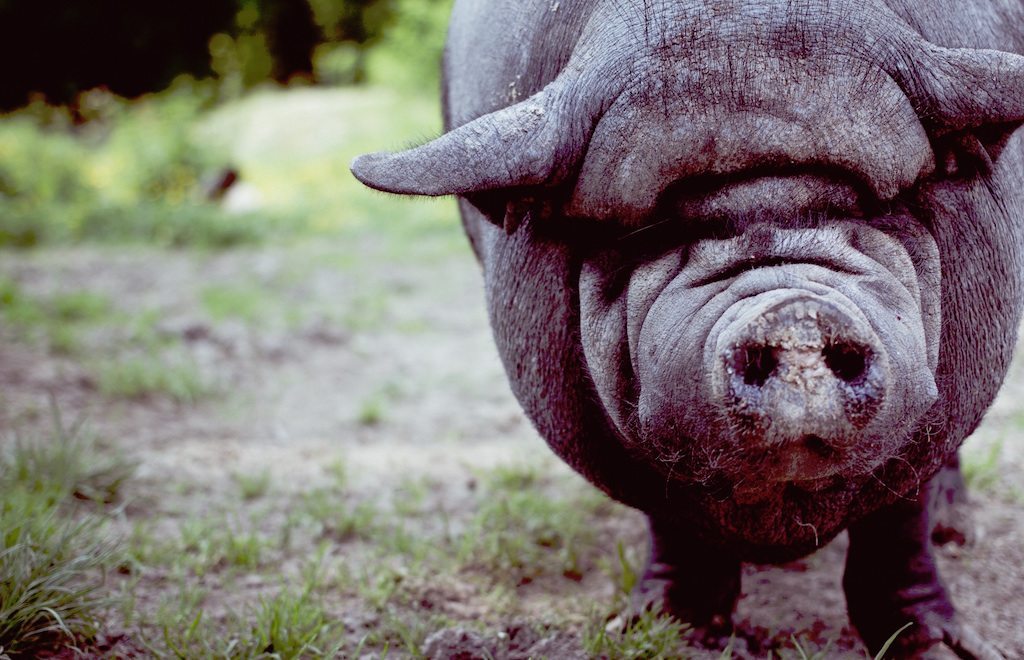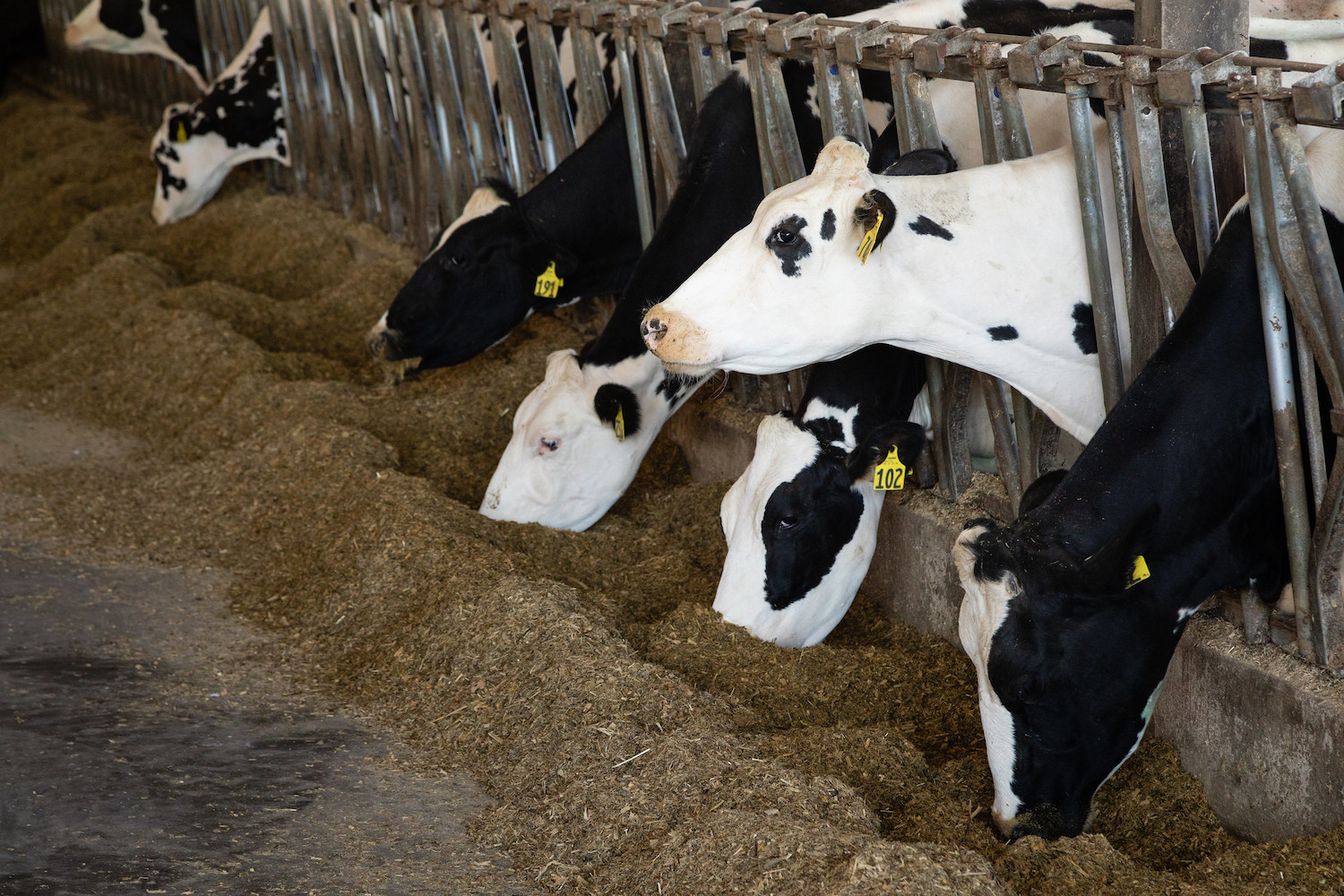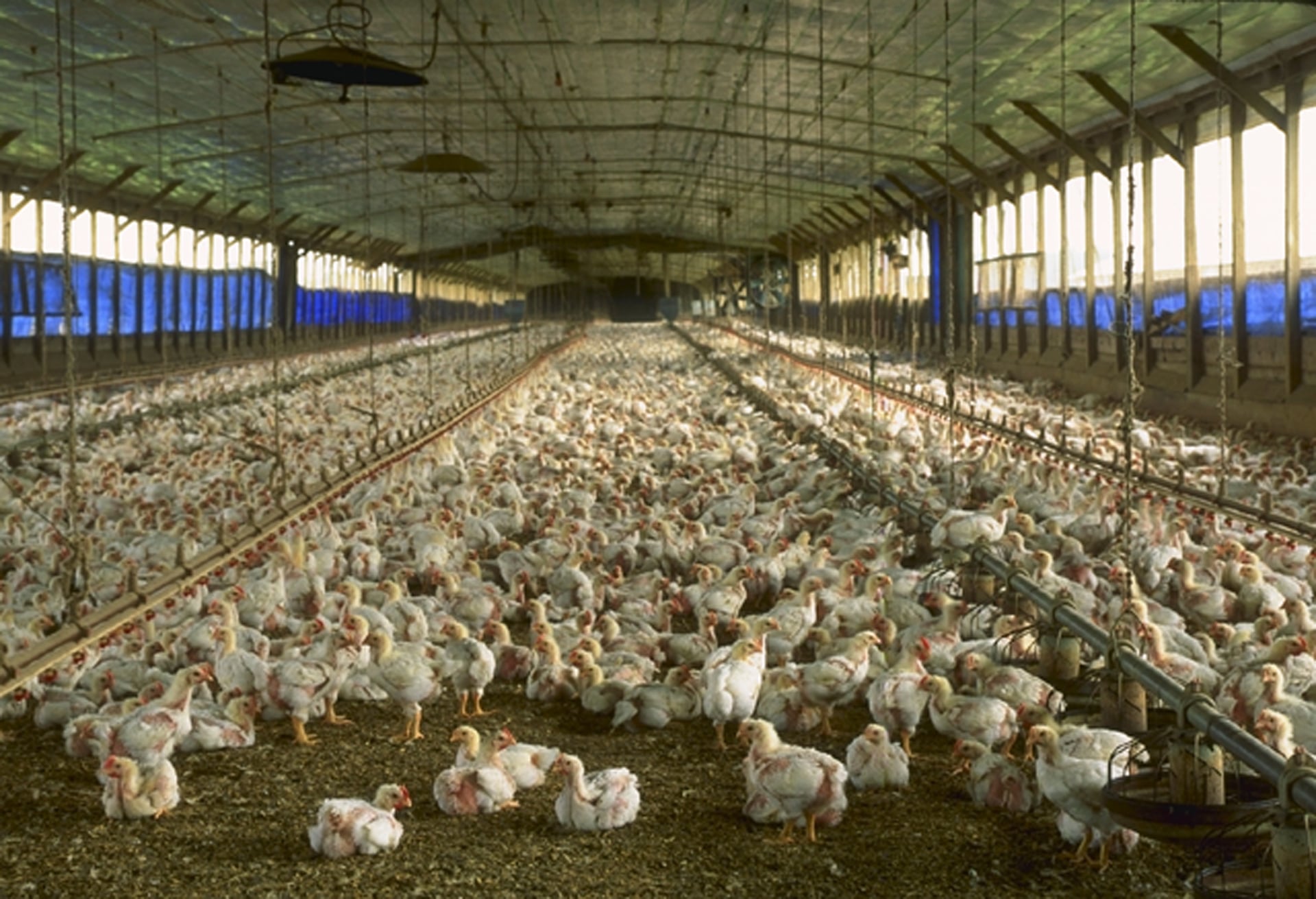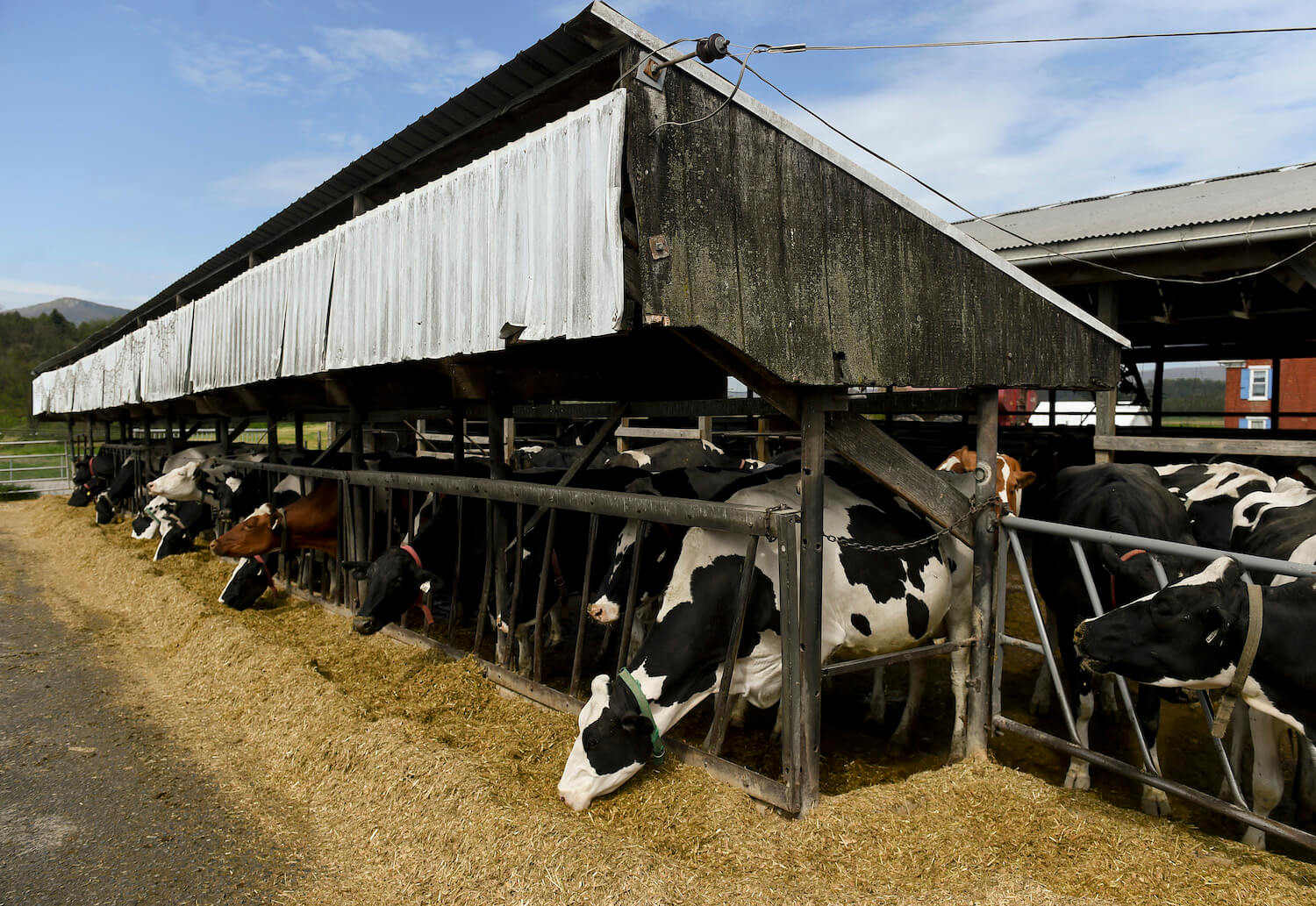
Photo by Ben Hasty/MediaNews Group/Reading Eagle via Getty Images
There is no comprehensive list of all the concentrated animal feeding operations, or CAFOs, in the Midwest. A lawsuit prevented the federal government from making one.
Deborah Bunka knows she’s in Hardin County, Iowa, when the smell of manure starts to filter in through her car’s air conditioning.
This article is republished from The Midwest Center for Investigative Reporting. Read the original article here.
As the membership director for Iowa Farmers Union, Bunka has spent a lot of time talking to farmers in counties like Hardin, where pigs outnumber people about 37 to 1. And she’s seen firsthand the effects of living in close proximity to so many animals.
“There are parts of this state where you can’t open your windows,” Bunka said.
In Iowa and across the Midwest, the source of the smell can be hard to pinpoint, and that’s by design. The federal government doesn’t keep tabs on livestock operations nationwide, a matter of concern for environmentalists, activists and community members alike.
Iowa is the country’s top pork producer, with around 24 million hogs at any given time, according to industry data. Most of that production comes from concentrated animal feeding operations, or CAFOs, large scale livestock operations that raise thousands of animals in enclosed barns.
“There are parts of this state where you can’t open your windows.”
CAFOs have been a point of contention between the livestock industry and environmental activists since they began to proliferate in the 1990s, overtaking small, pasture-feeding operations as the dominant form of animal agriculture in the U.S. As the number of livestock producers has declined, the number of animals—hogs, cattle, and poultry—has skyrocketed over the past several decades, in part due to rapid consolidation in the industry.
One large CAFO can easily produce more than one million tons of manure per year — more than the yearly waste of a large city. That manure not only causes the smell that Bunka described, but also contributes to water and air pollution when improperly managed.
The animal waste—usually stored in a lagoon or large tank before being spread as fertilizer in crop fields—contains nitrogen, phosphorus and sometimes growth hormones, antibiotics or pathogens such as E. coli. Rainwater can cause lagoons to spill over or wash the manure out of fields and into waterways.
But the full extent of the damage is hard to estimate because the federal government doesn’t keep track of where CAFOs are located. Instead, it’s up to states, researchers and activists to build their own databases.
This work is complicated by the fact that each state has different rules for issuing CAFO permits, on top of those mandated by the federal government.
“I think it’s one hundred percent the government’s responsibility to know where CAFOs are.”
Generally, any animal feeding operations (AFOs) that discharge waste into federal waterways must apply for a permit from the Environmental Protection Agency or from the state agency designated by EPA. When a government agency issues such a permit, the applicant’s information is added to a database. The collected information includes the facility type and location, the owner’s name and contact information, the number of animals at the AFO, and the facility’s manure disposal plan.
These databases are useful because they allow agencies to quickly locate the source of a pollution event, schedule facility inspections and track CAFO hotspots. They’re also considered public records, obtainable via a Freedom of Information Act request, which allows journalists, researchers, environmental groups and neighbors to access the same information.
The federal government doesn’t require permits for facilities that claim they pose no risk to water quality, however, meaning thousands of CAFOs aren’t included in these databases. When EPA tried to expand its reach to cover unpermitted facilities, judges ruled the agency cannot require all CAFOs to apply for a permit, effectively barring the federal government from creating a complete register.
Even before lawsuits blocked EPA from collecting more data on CAFOs, the agency wasn’t adequately studying the environmental impact of their waste, according to the Government Accountability Office, a nonpartisan organization that audits federal agencies.
While the Clean Air Act doesn’t specifically mention CAFOs, animal operations have to abide by the same emission limits as other industries.
The work of cataloguing these facilities and their environmental impact is left to states, academic researchers and activists, whose combined work has created a patchwork of maps and databases that shed light on the prevalence of CAFOs in the U.S.
“I think it’s one hundred percent the government’s responsibility to know where CAFOs are, to know the environmental and health impacts each one can have, and to make that available to the public and to people like myself to inform policy making and policy design,” said Lee Miller, lecturing fellow at Duke Law and food and agriculture policy expert.
The EPA doesn’t know where thousands of CAFOs are
The EPA’s authority to regulate CAFOs comes from two pieces of legislation, both passed in 1972: the Clean Water Act and the Clean Air Act.
While the Clean Air Act doesn’t specifically mention CAFOs, animal operations have to abide by the same emission limits as other industries.
In 2005, in an attempt to develop specific CAFO air emission requirements, EPA struck a deal with CAFO operators, granting civil protections to the CAFOs that participated in an industry-funded emissions monitoring program.
The EPA was supposed to use the results of the study to determine the best way to measure CAFO air emissions and to enact emissions controls by 2010.
Eleven years later, the agency still hasn’t determined how to measure CAFO air emissions. In August 2020, EPA released a draft model for estimating swine CAFO emissions and the agency’s website states that draft models for certain emissions from poultry and dairy operations will be released this year.
Without air quality regulations in place, EPA cannot create a database of CAFOs using its authority under the Clean Air Act.
But what the limits will be, and when they will take effect, is still “TBD.” Until the rules are finalized, protections remain in place for CAFOs that took part in the original monitoring study 15 years ago.
And, without air quality regulations in place, EPA cannot create a database of CAFOs using its authority under the Clean Air Act.
The agency has successfully documented certain CAFOs using clean water laws. In the 1970s, under authority granted by the Clean Water Act, EPA began requiring CAFOs to obtain a National Pollutant Discharge Elimination System (NPDES) permit if they planned on discharging waste into federally regulated waterways. It’s the only permit the federal government requires of CAFOs.
But as the number of unpermitted CAFOs dramatically increased in the decades after the acts passed, EPA sought to bring more of the facilities under federal regulation.
In 2003, EPA issued a rule that would require all CAFOs to apply for permits unless they could prove that there was no possibility of water contamination. But the regulation was essentially nullified in 2005, when a judge struck down the “duty to apply” part of the rule, stating that EPA could not regulate CAFOs based solely on the presumption that the facility would pollute.
“In our experience, we can not trust a lot of these operators to self-report, even in the case of something extreme happening, like a manure spill,” Miller said.
Miller co-authored a report about the lack of public information about CAFOs and their effect on the environment for the Natural Resources Defense Council, a nonprofit advocating for environmental protection and anti-climate change policies. Due to this court ruling, CAFOs often decide for themselves whether they need to apply for a NPDES permit, the NRDC report alleges.
“In our experience, we can not trust a lot of these operators to self-report, even in the case of something extreme happening, like a manure spill.”
And not knowing the exact location of thousands of animal feeding operations makes it harder for regulators to find the source of a manure spill or to know which areas are CAFO-dense and should be closely monitored for pollution, Miller said.
In 2013, after the livestock industry resisted EPA efforts to gather information on CAFOs nationwide, the agency instead requested CAFO databases from each state, creating an extensive federal CAFO database for the first time. The Natural Resources Defense Council then filed a Freedom of Information request for that database. The EPA complied, mailing the NRDC a disk with all of the information they’d gathered from 30 states, including the names and addresses of thousands of farmers.
Citing fears of surveillance or compromised biosecurity, the Pork Producers Council and the American Farm Bureau Federation sued EPA, claiming that by releasing names and addresses, the agency had endangered farmers and their livestock. The litigation lasted until 2016, when a judge ruled that EPA had improperly released farmers’ information and blocked the agency from collecting and publicizing such data in the future. The NRDC returned the unredacted data.
“The pork industry has a long track record of working cooperatively with numerous stakeholders and has never hesitated to share information and data when it was warranted with appropriate government officials and legitimate researchers,” NPPC spokesperson Rachel Gantz wrote in an email to the Midwest Center. “NPPC will continue to vigorously defend the rights and privacy of its producers.”
Gantz declined when asked to provide specific examples of when the NPPC has provided industry data to government officials or researchers.
Iowa officials become “little detectives” in search for missing CAFOs
Much of the fight over CAFO management in the Midwest has played out in Iowa. Bunka got involved nearly 15 years ago with an environmental organization named Iowa Citizens for Community Improvement.
In 2007, the group filed a petition with EPA, asking federal authorities to investigate the Iowa Department of Natural Resources and seeking stronger enforcement of environmental protection rules. The EPA ignored the petition, however, until Iowa CCI threatened to sue for inaction in 2011.
The threat kicked EPA into gear, and District 7 of the agency conducted an investigation of the Iowa Department of Natural Resources (DNR) in 2012.
Investigators found that the Iowa DNR didn’t issue NPDES permits when appropriate, didn’t conduct enough inspections of unpermitted facilities to determine if they needed a permit, failed to act on permit violations in nearly half of the reviewed cases, didn’t impose adequate penalties against rule breakers, and didn’t enforce federal rules governing where CAFOs could and could not be built.
From 2013 to 2018, EPA and Iowa DNR worked together to address the issues pointed out in the report.
Iowa CCI got involved in the plan by petitioning the Iowa Environmental Protection Commission, a politically-appointed group that oversees the state DNR. For nine months, Bunka traveled across rural Iowa, visiting local events like farmers markets and fairs. She gathered signatures for a petition asking the commission to enact stricter regulations and permitting requirements for CAFOs.
Bunka collected more than 2,000 signatures. She brought the signed papers to the Iowa CCI offices, where staff made photocopies and taped all the papers together before bringing the long list of names to a meeting of the Iowa Environmental Protection Commission, a politically-appointed board that oversees environmental policies in the state.
In North Dakota there is no online database or map of AFOs. Instead, anyone seeking information about the facilities must file a formal open records request.
In the meeting room, staff members wrapped the paper chain all the way around the commissioners, asking them to join the call for an audit of the Iowa DNR.
“There was a lot of gaveling, and then they kicked everyone out and ended the meeting,” Bunka said. The commission never enacted the policies sought by Iowa CCI.
But the work plan brought other reforms to the department, including a requirement to take an inventory of all animal feeding operations in the state.
Iowa DNR employees scoured satellite maps, cross-referencing them with their existing AFO database, and found more than 1,200 previously unidentified medium and large animal feeding operations.
“We’ve become little detectives,” Iowa DNR environmental engineer Cindy Garza said.
Garza considers Iowa’s online databases to be the best in the region, and she’s been involved since the data went online in 2009. The state’s online AFO database contains all of the facilities the department has contact with, she said. That includes medium and large AFOs, which are required by state law to file manure management plans; any facility that’s been cited for violating DNR regulations; the operations located in the department’s 5-year search; all NPDES permitted facilities; and those that register voluntarily with the department.
In all, the online database contains information on nearly 13,000 operations, not all of which are active. The Iowa DNR also maintains an interactive map of the facilities connected to the main AFO database.
While EPA’s intervention shed light on the prevalence of unpermitted, under-the-radar CAFOs in Iowa, the same attention hasn’t necessarily been paid to other states’ permitting programs.
Detailed CAFO databases are harder to come by in other places. In North Dakota, for example, there is no online database or map of AFOs. Instead, anyone seeking information about the facilities must file a formal open records request. And before the state releases information about specific facilities, the Department of Environmental Quality has to mail out release forms to every operation included in the database notifying them of the request. (In 2019, a Midwest Center reporter fielded about 90 phone calls from AFO owners who’d been notified of the request and provided his phone number by the state.)
Researchers and activists create their own CAFO databases
Without a central database to reference in research, scientists and academics who study agriculture and the environment have found other ways to gather information about CAFOs.
In 2020, two Stanford researchers published a deep-learning artificial intelligence tool that could find CAFOs using Google Maps. The tool used the distinctive aerial appearance of CAFOs– rows of long, rectangular roofed barns, sometimes interspersed with manure lagoons — and scanned satellite images to find the operations. According to a report published in Nature Sustainability, the AI tool accurately detected more than 90 percent of concentrated poultry operations in one region of North Carolina — a state that doesn’t require permits for most poultry CAFOs.
“A lot of people who used to be in this space have left because they just got so heartbroken. So a lot of institutional knowledge has been lost.”
The researchers published the AI tool online, and animal rights activists quickly put it to work building maps of CAFOs across the U.S. One activist group, Project Counterglow, published a crowdsourced map of the entire US using AI to pinpoint CAFOs and cross-reference the operations with existing databases.
The map is the first of its kind, pointing out thousands of CAFOs that aren’t present in government records.
But Project Counterglow doesn’t provide any information about its backers or funding. The website crowdsources information on individual facilities, asking followers to gather and publish evidence of animal cruelty or malpractice on the site. The map sparked concern among the livestock industry, prompting articles about protecting one’s operation from surveillance and fear of bioterrorism.
Project Counterglow did not respond to requests for comment.
Fighting a constant battle for data transparency and stronger CAFO regulation has caused burnout among environmental scientists and policymakers, said Austin Frerick, deputy director of the Thurman Arthur Project at Yale University, which conducts research on competition policy and antitrust enforcements.
“A lot of people who used to be in this space have left because they just got so heartbroken,” Frerick* said. “So a lot of institutional knowledge has been lost.”
Online CAFO information by state
Missouri: interactive map
Iowa: AFO database and interactive siting map
Illinois: database of NPDES-permitted AFOs
Nebraska: interactive map
Wisconsin: static map and searchable database (with free account)
North Dakota: None
South Dakota: Static map
Minnesota: Downloadable map and database


